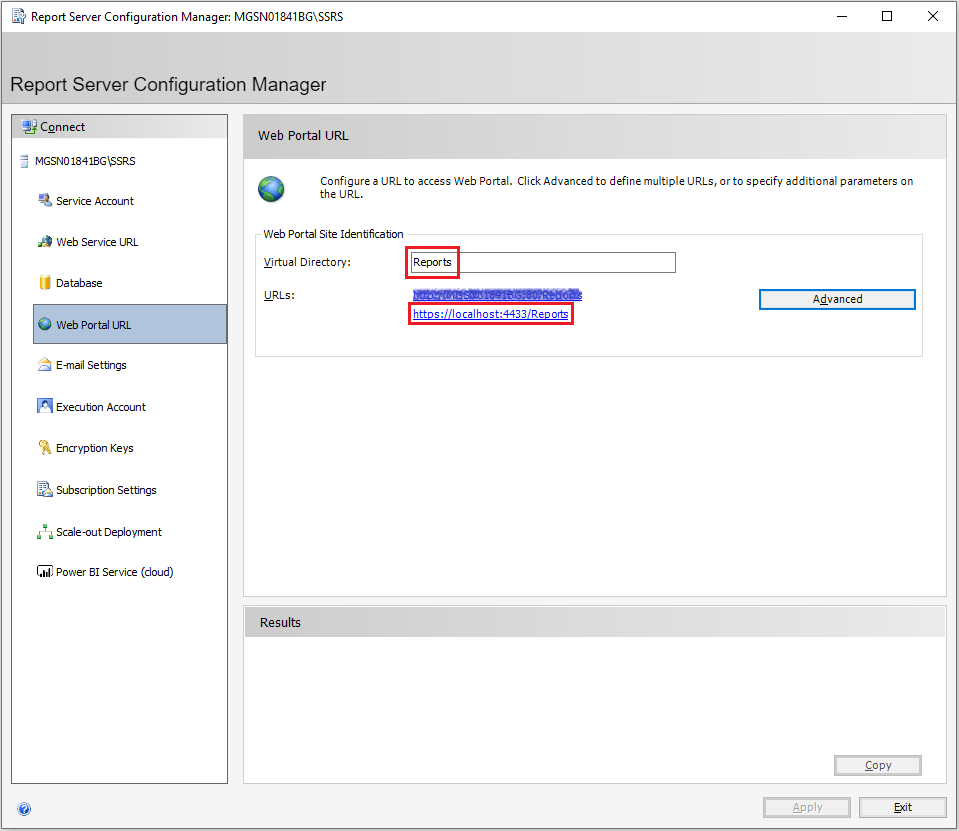SQL Server Reporting Services - Installation
Requirements
Symbio requires at least a version of SQL Server 2014 to host SSRS. SQL Server 2016 and up is recommended, though.
Setup
Choose appropriate settings and keep an eye on the parts listed below.
Web Service URL

Please secure your Report Service with an HTTPS endpoint, choose a valid and accepted certificate, and note the resulting URL for later use. Remember that this URL must be available to the Reporting Connector (for managing workspaces).
Database
The Report server stores all report server content and application data in a database. This is the internal SSRS management database, this is not the ODS Database!. You may keep to all default settings here if you want.

Web Portal URL

Please secure your Report Service with an HTTPS endpoint and choose a valid and accepted certificate. Remember that this URL must be available to browsers in your organization (for displaying reports).
Workspace Template
The Reporting Connector is expecting a template directory in SSRS that will be used to create workspaces for different report pools configured in Symbio.
It is recommended that you create one root folder in SSRS per Reporting Connector that will use that SSRS instance. In the image below this root folder has been named SymbioReporting. If you create a root folder (which is optional), please note its name (or path using forward slashes if you create a deeper nested structure).
In your Reporting Connector's root folder create a template folder and note its name. In the example below this folder has been named Template. For each report pool in Symbio, the connector will create a copy of the template folder and assign it the ID of the report pool as its name.

Upload the report files (*.rsd) and report annotation files (*.json) into the template folder.
Create a data source named AzureDatabase, choose the type of the connection (SQL Server or Azure SQL), set the connection string for the ODS database, and use the credentials of a login with read-only access to the ODS database.
